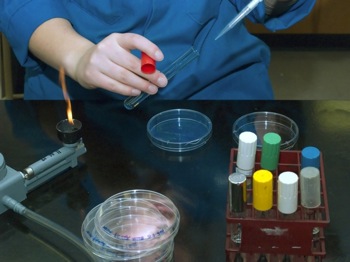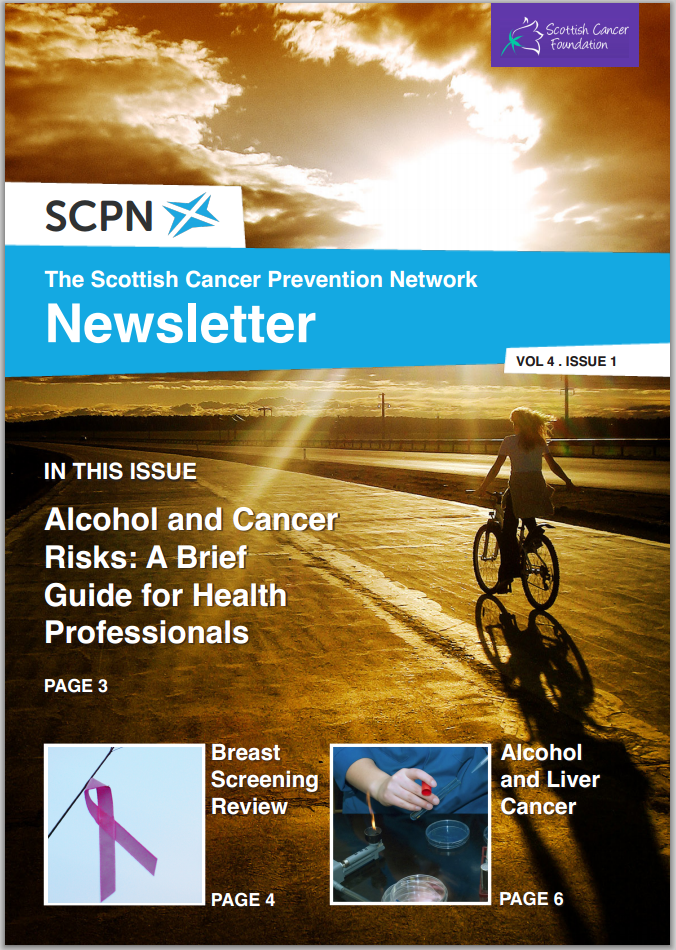
Alcohol and Liver Cancer

24 Jan 13 |
Incidence and mortality of hepatocellular (HCC) or liver cancer is increasing in Scotland and the UK as a whole. Figures published by the Information Services Division Scotland report 393 (M 269, F 124), new cases of liver cancer in 2010, – an increase in incidence of M +59.4%, and F +10.3% since 2000 and 420 (M 263, F 157) deaths in 2011 – an increase in mortality of M +44.6% and F +11.8% from 20011.
Survival rates for HCC in Scotland are however continuing to improve. Male and female one-year and three-year survival in 2005 – 2007 was significantly higher when compared to those in 1985 – 1987. This was also true of five-year survival rates in women. However, lower survival rates are linked to older age, deprivation and alcohol-related admissions2.
HCC rarely develops in a normal liver. It is usually associated with cirrhosis, particularly if due to alcohol, viral hepatitis and most recently recognized non-alcoholic fatty liver disease. Although the majority of those with alcohol related cirrhosis do not develop HCC, this remains the commonest cause of HCC development, arising on average 4-5 years after cirrhosis diagnosis . The risk of HCC development in alcoholic cirrhosis is increased when combined with obesity, hepatitis B or hepatitis C infection. Due to the increased risk of HCC in patients with established cirrhosis, regular screening for HCC by liver ultrasound scanning is recommended every 6 months3.
Alcoholic liver disease accounted for 6733 hospital discharges during 2009/104. Over the same period, analysis of alcohol sales indicate that 1190 units per adult were sold, equivalent to 22.9 units or nearly a bottle of whisky per person per week for every adult in Scotland. It is hoped that the minimum pricing bill will be pivotal in reforming our cultural relationship and social attitudes to alcohol. If successful, predictive modeling has postulated that 10 years after its introduction the bill could contribute to 300 fewer deaths and 6500 fewer hospital admissions annually5
Whilst improvements in survival rates of liver cancer pay testament to innovations in medical treatments and advances in liver transplantation it is clear that any reduction in the excessive consumption of alcohol in Scotland offers much potential to further capitalise upon this progress.
Dr Jacqueline CM Paterson, Ninewells Hospital, Dundee.
1. Information Services Division Scotland. Available: http://www.isdscotland.scot.nhs.uk/Health-Topics/Cancer/Cancer-Statistics/Liver/
2. Dunbar, J. K., Dillon, J., Garden, O. J. and Brewster, D. H. (2012), Increasing survival of hepatocellular carcinoma patients in Scotland: a review of national cancer registry data. HPB. doi: 10.1111/j.1477-2574.2012.00567.x
3. EASL–EORTC Clinical Practice Guidelines: Management of hepatocellular carcinoma. Journal of Hepatolgy 2012;56:908–943
4. Alcohol Information Scotland. Available: http://www.alcoholinformation.isdscotland.org/alcohol_misuse/files/Alcohol_related_hosp_stats2010.pdf
5. Scottish Government. Alcohol Minimum pricing Bill passed. Available: http://www.scotland.gov.uk/News/Releases/2012/05/alcohol24052012
This article was originally published in the SCPN Newsletter, Volume 4, Issue 1.
Read the full issue here:

The SCPN Newsletter: Volume 4, Issue 1
In our Spring 2013 issue, we share a brief guide for health professionals regarding alcohol and cancer risks, review breast screening efforts, explore the links between alcohol and liver cancer, and more.